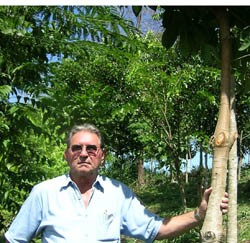
Brazil’s Atlantic Forest region accounts for 80 percent of the country’s GDP, hosts 70 percent of its population, and has lost over 90 percent of its original forest cover. The forest was once a continuous stretch of tropical and subtropical rainforest covering almost 1.4 million square kilometers. Today, it exists in isolated fragments threatened by illegal logging, poaching, deforestation, and urban and industrial development.
One of the world’s richest ecosystems, a single hectare of the forest can hold more tree species than are found on the entire U.S. Eastern Seaboard. It also hosts a vast array of animals, many of which are both unique to the forest and endangered.
USAID’s Global Development Alliance is working to preserve and restore some of these forests. The goal is to create “conservation corridors” linking isolated forest fragments to one another through agreements between private landowners, corporate landowners, and environmental conservation groups. These corridors help preserve plant and animal species whose long-term survival is threatened when isolated by deforestation.
With help from USAID, the Instituto BioAtlântica (IBio)—a Brazilian conservation group—has reached out to both conservation-minded landowners and large corporations.
The landowners, who were reforesting property with native species on their own initiative, had valuable experiences to share but no tools to evaluate impact or disseminate their knowledge. They are now sharing and refining their expertise. Anthenor Pianna had kept an eight-hectare reforestation plot for six years and grown native tree species to 10 meters tall. Yet his success had been largely unknown. He now exchanges knowledge with conservationists and other landowners. Michel Frey has more than 50 hectares under restoration and plans to restore another 40 with the help of local environmentalists.
The corporations, who together own 150,000 hectares of native Atlantic Forest, are partnering with IBio to reforest lands, link forests through “biodiversity corridors,” and apply lessons learned from private conservationists. In one year, the program secured 9000 hectares of protected native and restored forests.
Print-friendly version of this page (470kb - PDF)







Comment
Make a general inquiry or suggest an improvement.